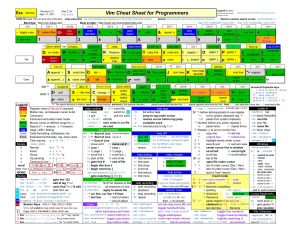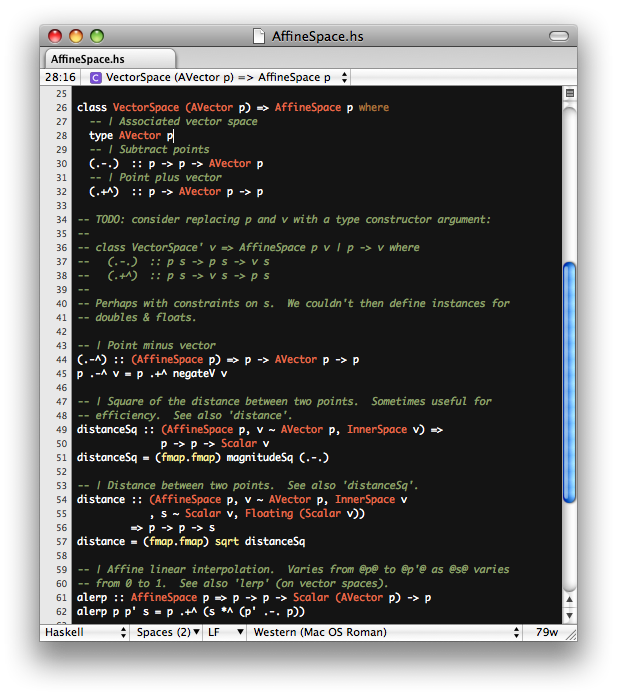
- Install macvim dmg how to#
- Install macvim dmg pdf#
- Install macvim dmg manual#
- Install macvim dmg pro#
- Install macvim dmg series#
Vim has a different implementation of RPC and must be specially compiled with the +clientserver option to ensure inverse search works. This is largely because Neovim’s built-in implementation of the remote procedure call (RPC) protocol ensures inverse search works reliably on all platforms. If you have a choice of editor, use Neovim-everything works on every OS, potentially with a few small workarounds.
Install macvim dmg manual#
If you have a choice of OS, use some flavor of Linux-everything works on both Vim and Neovim, potentially with a few manual tweaks.
Install macvim dmg pdf#
I tested 9 combinations of editor, OS, and PDF reader when preparing this article, and the results are summarized in the table below-the more check marks the better.
Install macvim dmg series#
I have not tested PDF readers on Windows (reminder of the series prerequisites for operating systems),īut you can find an overview of PDF reader possibilities on Windows in the VimTeX documentation section :help g:vimtex_view_method. Use Zathura on macOS at your own risk and know you might be unsuccessful. Unless you really know your way around Homebrew and macOS you should probably use Skim, which should “just work”. TLDR: Zathura might work on macOS, but seems to be very finicky
Install macvim dmg pro#
I’ve personally managed to get Zathura and VimTeX working on an Intel MacBook Pro (and have included a section at the end of this article explaining how), but many VimTeX users have reported issues following the same produced I used, particularly with Apple Silicon Macs. …thanks to the Homebrew formula provided by homebrew-zathura project and the instructions in :help vimtex-faq-zathura-macos. You might also have success using Zathura on macOS… (The default macOS PDF reader, Preview, does not listen for document changes, nor, to the best of my knowledge, does it integrate nicely with SyncTeX.) Use Skim, which you can download as a macOS dmg file from its homepage or from SourceForge. Note, however, that many more Linux-compatible PDF readers exist-see the VimTeX plugin’s documentation at :help g:vimtex_view_method if curious. The VimTeX plugin also makes configuration between Zathura and Vim very easy.

I recommend and will cover Zathura, under the assumption that anyone reading a multi-article Vim series will appreciate Zathura’s Vim-like key bindings and text-based configurability. The PDF reader integrates with a program called SyncTeX, which makes it easy for Vim and the PDF reader to communicate with each other-SyncTeX makes forward and inverse search possible.

Or I guess you could hack together a shell script to do this for you, but why bother?) (The alternative: manually switch applications to the PDF reader, refresh the document, and switch back to Vim after every single compilation. In the background, the PDF reader constantly listens for changes to the PDF document and automatically updates its display when the document’s contents change after compilation. A Vim Configuration Primer for Filetype-Specific Workflows, which explains everything you need to know about Vim key mappings to understand this series (the same concepts apply if you use Neovim and Lua).Ī PDF reader used in a LaTeX workflow should meet two important requirements: We will also define some Vim key mappings in this article-if Vim keywords like :map,, , and are unfamiliar to you, consider taking a detour and reading through the final article in this series, 7. In case you are just dropping in now and Vim’s ftplugin system sounds unfamiliar, consider first reading through an earlier article in this series, which covers what you need to know about ftplugin. This article will make regular references to the file ftplugin/tex.vim, which we will use to implement LaTeX-specific Vim configuration through Vim’s filetype plugin system.


Install macvim dmg how to#
This article explains, for both Linux and macOS, how to set up a PDF reader for displaying the PDF file associated with the LaTeX source file being edited in Vim. This is part six in a seven part series explaining how to use the Vim or Neovim text editors to efficiently write LaTeX documents. Setting Up a PDF Reader for Writing LaTeX with Vim


 0 kommentar(er)
0 kommentar(er)
